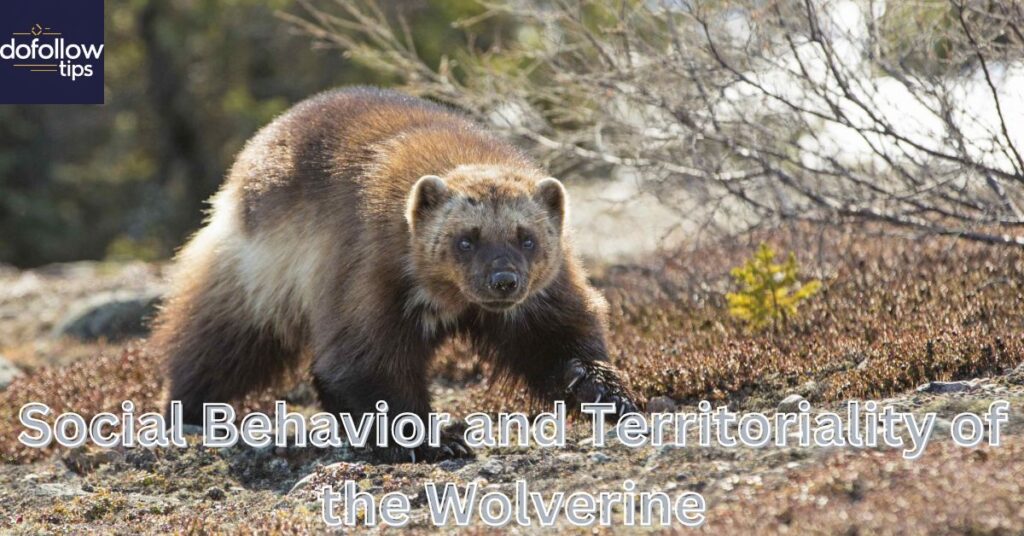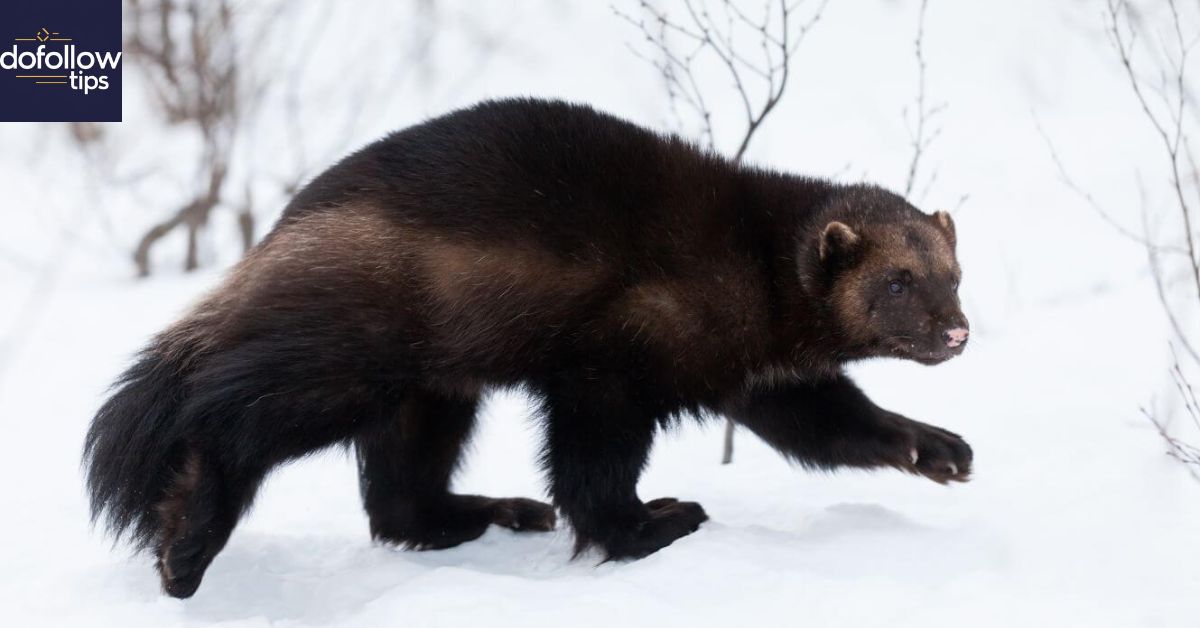The wolverine (Gulo gulo) is an extraordinary creature known for its strength and ferocity. Often misunderstood due to its small size, this member of the weasel family can take down prey much larger than itself. With a stocky build and powerful limbs, the wolverine embodies resilience and tenacity in the wild.
Inhabiting cold, rugged regions of the Northern Hemisphere, wolverines thrive in remote and mountainous landscapes. Their thick fur provides excellent insulation against harsh weather, allowing them to navigate snowy terrains with ease.
What Makes the Wolverine Unique?
Wolverines are unique in several ways. They are known for their strength and tenacity. Despite their size, they can tackle prey much larger than themselves. Their robust build distinguishes them from other weasels. Wolverines have powerful jaws and sharp claws. These features make them formidable predators.
Their fur is another unique aspect. It is thick and provides excellent insulation. This adaptation helps them survive in extreme cold. Wolverines are primarily solitary animals. They prefer to hunt and roam alone, showcasing their independence.
READ THIS BLOG: Bokepindo13 Unveiled: Your Gateway to Indonesian Cinema
The Habitat of the Wolverine

Wolverines thrive in cold, rugged environments. They inhabit mountainous regions across the Northern Hemisphere. Their range includes North America, Europe, and parts of Asia. In North America, they are commonly found in Alaska and Canada.
These animals prefer remote landscapes. Dense forests, alpine meadows, and tundras are ideal. High altitudes provide the seclusion they need. Wolverines are adapted to harsh climates. They can withstand extreme cold and navigate rugged terrains.
Diet and Hunting Strategies of the Wolverine
Wolverines are opportunistic feeders. Their diet is diverse, including small mammals, birds, and carrion. They are known to consume whatever is available. Their powerful jaws enable them to crush bones. This allows them to access nutrient-rich marrow.
Wolverines are skilled hunters. They use endurance to track down prey. Their keen sense of smell helps them locate food. Wolverines can dig through snow to find hidden carcasses. They are not afraid to scavenge, making them effective foragers.
Reproduction and Lifespan of the Wolverine
Wolverines typically mate in the summer. After a gestation period of about 30 days, females give birth to one to three kits. The young are born blind and helpless. They rely entirely on their mother for warmth and nourishment.
The kits grow rapidly and begin to explore their surroundings. By late spring, they learn essential survival skills. They stay with their mother for several months. By the age of one, they are ready to establish their own territory. Wolverines can live up to 15 years in the wild.
Social Behavior and Territoriality of the Wolverine

Wolverines are primarily solitary animals. Each individual maintains a vast territory. Territories can span hundreds of square miles. Wolverines use scent marking to define their boundaries. This behavior helps reduce conflicts with other individuals.
During the breeding season, males and females come together. Males may assist in raising the young, which is unusual for solitary carnivores. Despite their solitary nature, they exhibit social behaviors during mating. This adds complexity to their social dynamics.
The Role of the Wolverine in the Ecosystem
Wolverines play a vital role in their ecosystem. They are apex predators. This means they help control populations of smaller mammals. By keeping these populations in check, they maintain ecological balance. Wolverines are also important scavengers. They aid in the decomposition process.
Their scavenging habits contribute to nutrient recycling. This helps return nutrients to the soil. Wolverines are indicators of environmental health. Their presence signifies a stable ecosystem capable of supporting diverse wildlife.
Conservation Status and Threats to the Wolverine
Wolverines face several significant threats. Habitat loss is a major concern. Human activities such as logging and mining disrupt their natural habitats. Climate change poses additional risks. Rising temperatures can affect their food sources and habitats.
Poaching and human-wildlife conflict also threaten wolverine populations. Conservation efforts are crucial for their survival. Various organizations work to protect habitats and raise awareness. Community involvement is essential in these efforts.
Adaptations of the Wolverine
Wolverines have evolved several remarkable adaptations. Their thick fur provides excellent insulation against cold. This fur is hydrophobic, helping them stay dry in snowy conditions.
Powerful limbs and sharp claws allow them to navigate rugged terrains. Wolverines are also known for their intelligence. They can cache food in hidden locations. This ensures a steady supply during scarce times. These adaptations make them well-suited for survival.
Fascinating Facts About the Wolverine
- Strength to Size Ratio: Wolverines are incredibly strong for their size.
- Solitary Nature: They are primarily solitary, coming together only for mating.
- Scavenging Skills: Wolverines can locate carrion buried deep in the snow.
- Cultural Significance: Wolverines symbolize strength and endurance in various cultures.
- Unique Adaptations: Their thick fur and powerful claws make them well-suited for harsh environments.
The Cultural Significance of the Wolverine
Wolverines hold a special place in indigenous cultures. They are often depicted as symbols of strength and cunning. Their fierce nature makes them popular figures in folklore. Many stories celebrate their resilience and bravery.
In modern culture, wolverines appear in comic books and movies. This has contributed to their iconic status. People admire their tenacity and fierce spirit. The wolverine’s image resonates with those who value strength and independence.
Observing the Wolverine in the Wild
Spotting a wolverine in the wild can be challenging. Here are some tips to increase your chances:
- Choose Remote Locations: Look for areas with dense forests and rugged landscapes.
- Look for Tracks: Keep an eye out for distinctive tracks and signs of activity.
- Be Patient and Respectful: Use binoculars to observe from a distance. Respect their shy nature.
Being in the right environment is crucial. Wolverines tend to avoid human presence. Therefore, early morning or late evening is the best time to observe them.
The Future of the Wolverine
The future of the wolverine depends on our collective conservation efforts. Continued research and habitat preservation are essential. Public awareness plays a crucial role in ensuring their survival.
By supporting conservation initiatives, we can help protect wolverines and their habitats. Community involvement is vital in these efforts. Everyone can contribute to the survival of this remarkable species.
ALSO READ THIS BLOG: Transparent:Lovn-K4yboc= Roblox
How to Support Wolverine Conservation?
There are several ways to support wolverine conservation:
- Advocacy: Stay informed about local and global conservation issues. Advocate for policies that protect wildlife habitats.
- Citizen Science: Engage in citizen science projects that monitor wildlife populations. Many organizations welcome volunteers to help track wolverine sightings.
- Promote Sustainable Practices: When engaging in outdoor activities, practice “Leave No Trace” principles. This minimizes your impact on natural environments.
- Support Conservation Organizations: Contribute to charities and non-profits focusing on wildlife conservation. Your donations can help fund research and habitat restoration.
- Educate Others: Share your knowledge about wolverines and their significance with friends and family. Raising awareness can spur collective action toward their conservation.
Frequently Asked Questions
What is a wolverine?
The wolverine is a powerful, solitary mammal known for its strength and resilience in harsh environments.
Where do wolverines live?
Wolverines typically inhabit cold, northern regions like Alaska, Canada, and Siberia.
What do wolverines eat?
Wolverines are carnivores that hunt small animals and scavenge larger carcasses.
Why are wolverines considered fierce?
Wolverines are known for their fearlessness, capable of taking on animals much larger than themselves.
Are wolverines endangered?
Wolverines are not endangered but face threats from habitat loss and climate change.
Conclusion
The wolverine is a testament to the resilience and adaptability of wildlife. Its unique characteristics and significant role in the ecosystem are fascinating. For wildlife enthusiasts, animal lovers, and biology students, the wolverine offers a glimpse into the complexities of the natural world.
By supporting conservation initiatives, we can help ensure that this fierce and mysterious warrior continues to thrive. Together, we can make a difference for the wolverine and its habitat.

Anthony is a seasoned SEO expert with a passion for content writing, keyword research, and web development. He combines technical expertise with creative strategies to deliver exceptional digital solutions.












